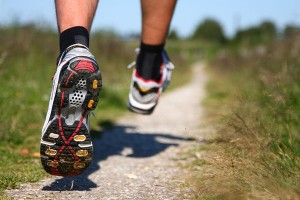 Both walking, and running require energy to move our bodies over a given distance. Walking can provide many of the same health benefits associated with running, however, running will produce the fastest physiological changes.
Both walking, and running require energy to move our bodies over a given distance. Walking can provide many of the same health benefits associated with running, however, running will produce the fastest physiological changes.
Which is better walking or running for fitness and health?
- We need to walk more frequently and twice the distance in order to get the effects of running
- Running is a constant challenge to the body and running burns about 2.5 times more calories than walking
The mechanics of walking and running
Joint impact, muscles, and type of stride used are different for walking than for running. The different strides engaged when running and walking affect the power efficiency, maximum speed and impact level.
Knee angle
Your knees are bent more during a running stride than they are during a walking stride. This increases the force exerted on the ground during running in comparison to the force exerted during walking.
Maximum speed
An average walking speed is about 5 kilometers per hour, verses an average running speed of 8.5 kilometers per hour.
Ground contact
The difference between running and walking strides is the length of time each foot is in contact with the ground. When walking, at least one of your feet will be in contact with the ground at any given time. When running, there is a period of time during each stride in which neither of your feet is in contact with the ground.
The impact to the body when running is much higher than walking; because the foot to surface impact ratio for running is three to four times your body weight compared to about one times your body weight for walking.
Energy
The different strides used for walking and running affect the energy used in executing each type of stride at different speeds.
Injury
One of the big differences between running and walking is there is a greater risk of injury in running. Running is considered a high impact exercise, because it can cause injury to the hips, knees and ankle joints. Walking is a low impact activity and is much less damaging to the joints.
Walking and running are low-cost, year-round activities; so whether you choose walking, or running, staying active is part of a healthy lifestyle. Both walking and running will help promote weight loss, improve your sleep, elevate your mood, improves circulation, improves muscle tone, boost your energy level, decrease blood pressure and cholesterol levels and decrease the risk heart disease.





